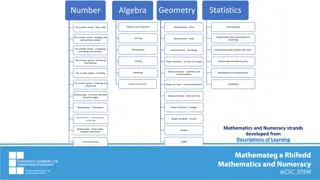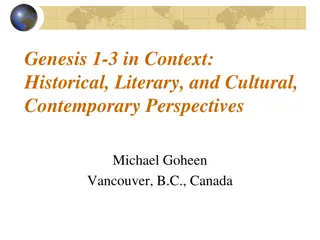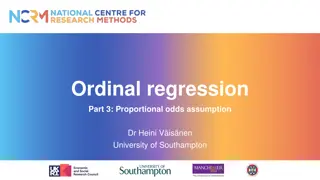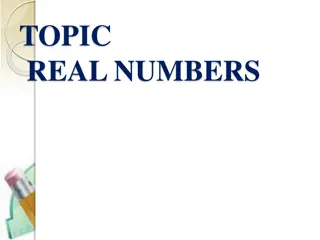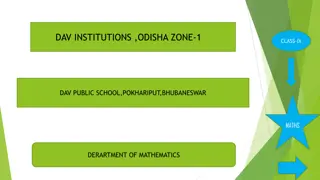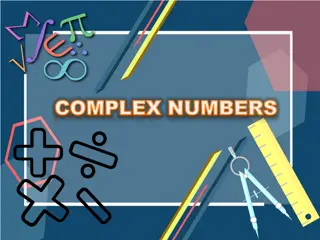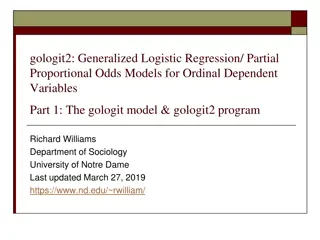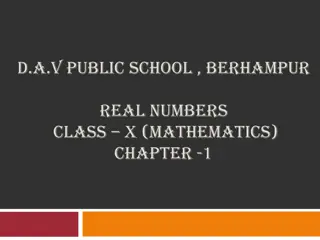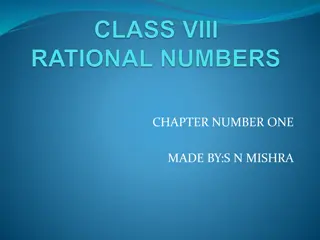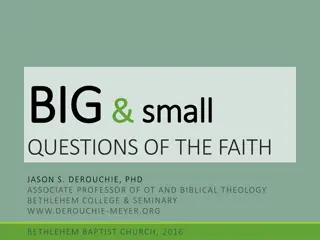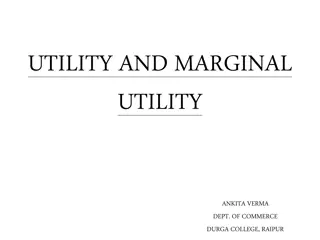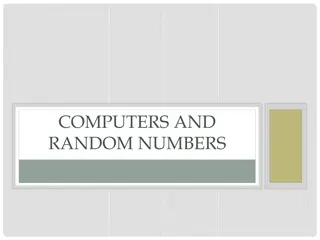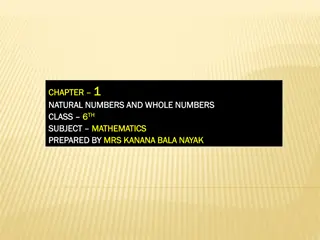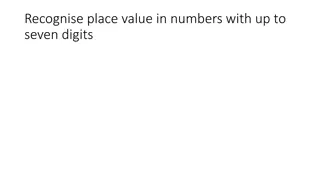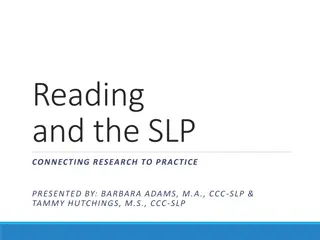Identifying and Reading Ordinal Numbers in Genesis 8:14
In this lesson on Genesis 8:14, the focus is on identifying and reading ordinal numbers. The content delves into parsing the verb in the verse, translating phrases, and understanding the use of adjectives. Explore the significance of historical narrative constructions and learn how to differentiate ordinal from cardinal numbers.
Download Presentation

Please find below an Image/Link to download the presentation.
The content on the website is provided AS IS for your information and personal use only. It may not be sold, licensed, or shared on other websites without obtaining consent from the author.If you encounter any issues during the download, it is possible that the publisher has removed the file from their server.
You are allowed to download the files provided on this website for personal or commercial use, subject to the condition that they are used lawfully. All files are the property of their respective owners.
The content on the website is provided AS IS for your information and personal use only. It may not be sold, licensed, or shared on other websites without obtaining consent from the author.
E N D
Presentation Transcript
Rocine Lesson 50 Genesis 8:14
Goals Identify and read ordinal numbers
What we already know Try and find the only verb in this verse and then parse it. Root Stem Form PGN Function Root meaning
What we already know Try and find the only verb in this verse and then parse it. Root Stem Form PGN Function Root meaning X-qatal Topicalization Qal Qatal 3fs To dry
What we already know Now we can translate the last phrase. What gender is the last word?
What we already know Now we can translate the last phrase. What gender is the last word? The land/earth dried Feminine
What we already know What is the X of the X-qatal here?
What we already know What is the X of the X-qatal here?
What we already know In Historical Narrative, prepositions, numbers and time words like or are used to construct a temporal X . Or plus the same preposition, number, and time word is used to create a temporal wayyiqtol clause. Both constructions can be used early in an episode or paragraph to set the time of a scene.
What we already know Translate The next word is an adjective. What kind of adjective it is?
What we already know Translate The next word is an adjective. What kind of adjective it is? Attributive (Rocine 18.2a) In the month
What we already know Translate the first phrase In the second month
What we already know is an ordinal number. It expresses order, e.g. first, second, third, etc., as opposed to cardinal numbers, which are the ones we use for counting.
What we already know Hebrew has special forms for the ordinal numbers 1 10, i.e. first tenth. See table in Rocine 50.2a, top of page 276. Numbers above 10 have no special ordinal and cardinal forms. Context must tell you the difference between ordinal and cardinal numbers above 10.
What we already know adjective noun modifies Ordinal numbers typically follow the noun they modify, as in the example above.
What we already know Let s translate the second phrase.
What we already know Let s translate the second phrase. In the 27th day
What we already know The lamed of is used to express a relationship of possession which translates into English of. Now we can translate the whole temporal clause, the temporal X of the X-qatal above.
What we already know The lamed of is used to express a relationship of possession which translates into English of. Now we can translate the whole temporal clause, the temporal X of the X-qatal above. In the second month, in the 27th day of the month
What we already know Read the notes and translate the examples in Rocine 50.2c and d. Note especially how the concept of an ordinal number can be expressed by an alternate word order which uses the construct form of the thing which is numbered. (See Rocine 50.2d, top of page 277 for description and examples.)
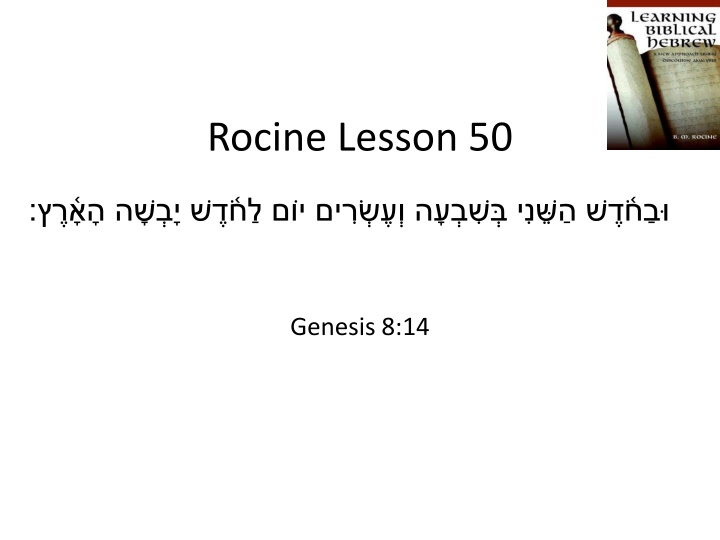

![❤[PDF]⚡ Escaping from Eden: Does Genesis Teach that the Human Race was Created](/thumb/21697/pdf-escaping-from-eden-does-genesis-teach-that-the-human-race-was-created.jpg)
